Baboon Tarantulas or Baboon spiders are tarantulas that are part of the Harpactirinae subfamily. These tarantulas are native to Africa and are known for their powerful bites and potent venom. However, even though the only “official” baboon spiders are in the Harpactirinae subfamily, there are several tarantulas in other subfamilies that also bear the “baboon” name as we’ll soon discover.
Many of the Baboon Tarantula species have defensive temperaments and are lightning fast. For that reason, they’re often not recommended for beginners to the spider-keeping hobby. However, if you’ve got some experience under your belt already then taking care of a baboon tarantula can be a very rewarding challenge. They are very beautiful and often have a very strong prey response.
If you’re considering taking one of the vicious spiders as your next addition to your collection, here is my top 7 baboon tarantulas that you should take into consideration!
7 Baboon Spider species
7. Stromatopelma calceatum
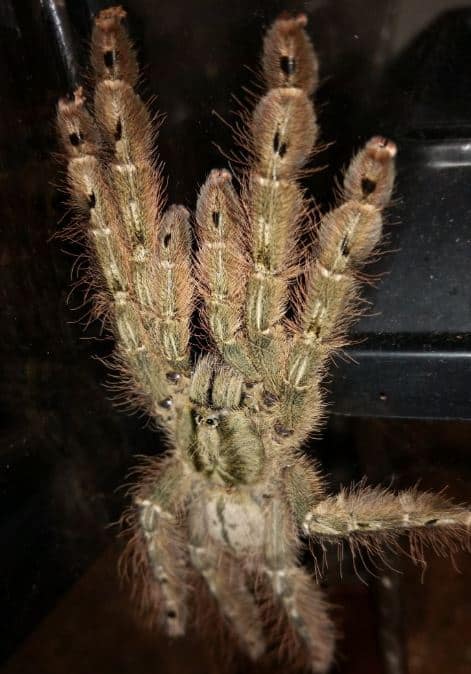
| Native location | West Africa |
| Type | Arboreal |
| Leg span | 6 inches |
| Growth speed | Fast |
| Lifespan | Female: 12 to 15 years / Male: 3 to 4 years |
| Experience level | Intermediate |
The Stromatopelma Calceatum is better known as the Feather Leg Baboon Tarantula. They’re known by this name due to their furry legs that are covered with thick hair.
This is a defensive and quick species that is likely to bite if provoked. As a result, they’re quite difficult to handle.
They’re also quite a shy species that tends to spend quite a lot of time hidden away. If they do not have a place to hide they can create impressive web structures to hide in instead.
As some among you might have noticed, this species is in the Stromatopelma genus, which is not part of the Harpactirinae subfamily. Nevertheless, hobbyists have given it the “baboon” moniker due to its appearance and behavior. I guess you could call it an honorary baboon!
6. Heteroscodra maculata
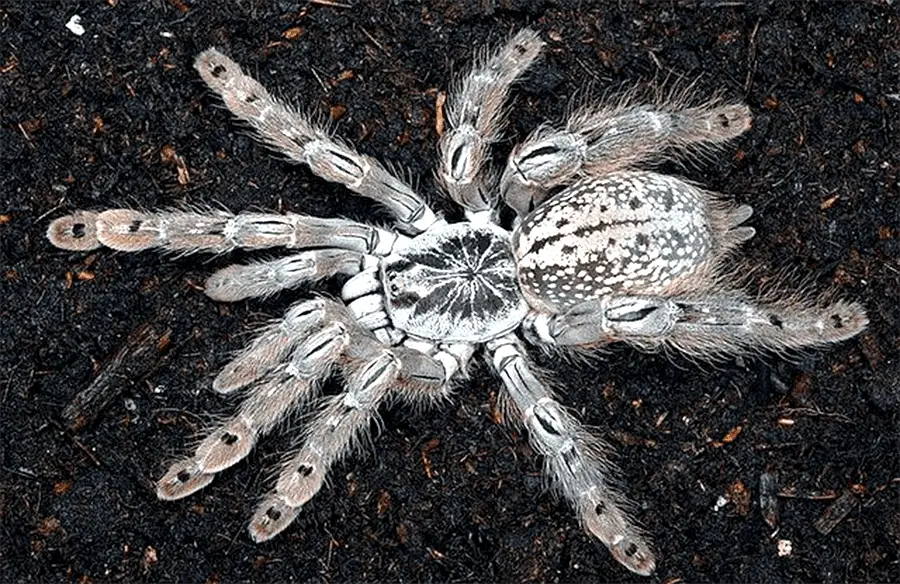
| Native location | Togo, Ghana |
| Type | Arboreal |
| Leg span | 5.1 inches |
| Growth speed | Fast |
| Lifespan | Female: 12 to 15 years / Male: 3 to 4 years |
| Experience level | Intermediate |
The Heteroscondra maculata is known by hobbyists under several names but the most common ones are the Ornamental Baboon and Togo Starburst Tarantula.
This species is native to a variety of countries in West Africa but is most commonly seen in Togo and Ghana. They’re characterized by their white brown and black patterns over their body that help them camouflage in the trees.
They’re decently defensive spiders but they don’t bite out of nowhere. They tend to strike a threat posture first and prefer to run rather than fight.
Like the previous entry on this list, this species is also not an official baboon but hobbyists have given it the name nonetheless.
5. Idiothele mira

| Native location | South Africa |
| Type | Terrestrial, fossorial |
| Leg span | 4 to 5 inches |
| Growth speed | Fast |
| Lifespan | Females: 10 to 12 years / Males: 2 to 3 years |
| Experience level | Intermediate |
The Blue Foot Baboon Tarantula is scientifically known as the Idiothele Mira. It’s native to South Africa where it employs a trapdoor hunting strategy to catch prey.
As their common name suggests, this species is famed for its blue feet which give it a very distinct and easily recognizable appearance.
This is a terrestrial fossorial species which means that they create burrows. They spend a lot of time in these burrows so you might not see them out in the open as much as you’d like.
The blue foot baboon is a relatively docile species that’s a great introductory species for people who are new to handling Old World species.
4. Harpactira pulchripes
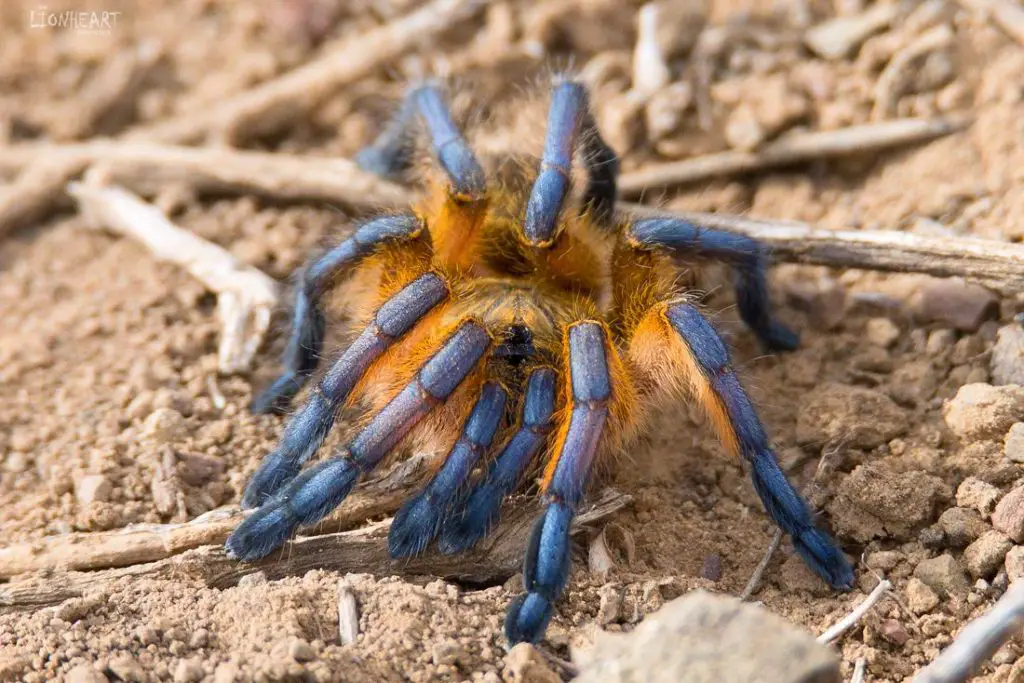
| Native location | South Africa |
| Type | Terrestrial |
| Leg span | 5 to 6 inches |
| Growth speed | Medium |
| Lifespan | Female: 10 to 12 years / Male: 2 to 3 years |
| Experience level | Intermediate |
The Harpactira pulchripes or Golden Blue Leg Baboon Tarantula is a relatively docile baboon spider. They’re a fossorial species so they tend to spend a lot of time in their burrow.
However, when they do come out they’re truly magnificent to behold. They’re one of the more colorful tarantula species with their metallic blue legs and yellow-golden coloration on their cephalothorax and abdomen.
3. Monocentropus balfouri
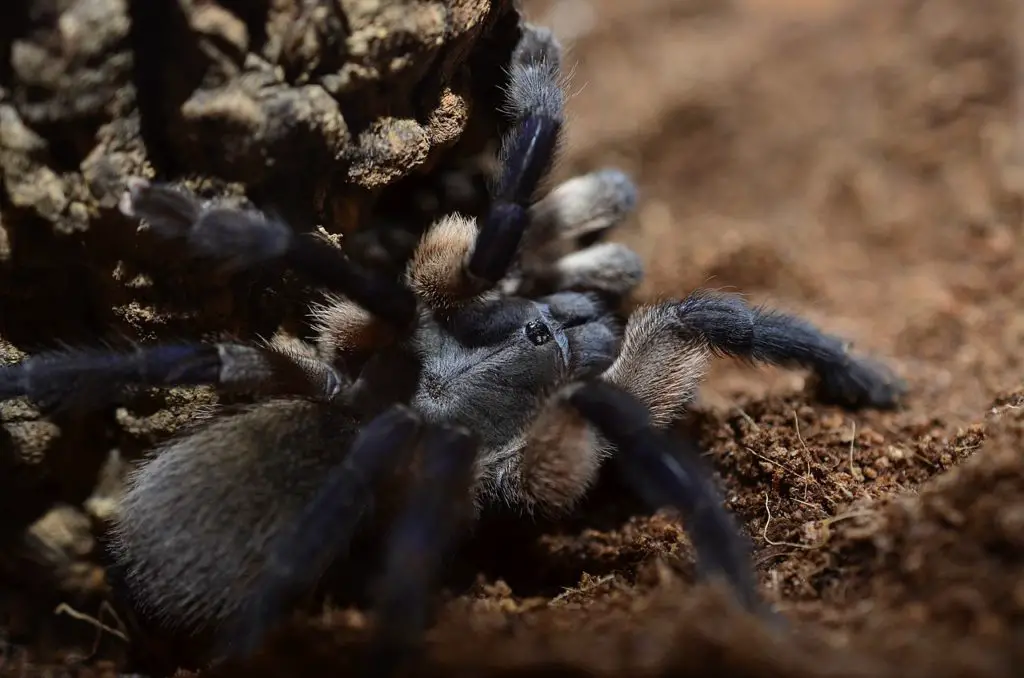
| Native location | Yemen |
| Type | Terrestrial |
| Leg span | 7 inches |
| Growth speed | Medium |
| Lifespan | Females: 12 to 14 years / Males: 3 to 4 years |
| Experience level | Intermediate |
The Monocentropus Balfouri or Socotra Island Blue Baboon Tarantula is a beautiful spider that lives on an island off the coast of Yemen. They’re most well known for 2 things: their appearance and the fact that they can live communally.
Its appearance is characterized by the electric blue coloration on its legs and cephalothorax and sandy hue on the abdomen.
The fact that this spider is capable of living communally means that it’s possible to house more than one of them in a single enclosure, though this should be done with great care to avoid cannibalism.
On the whole, definitely a very interesting species!
2. Pterinochilus Murinus
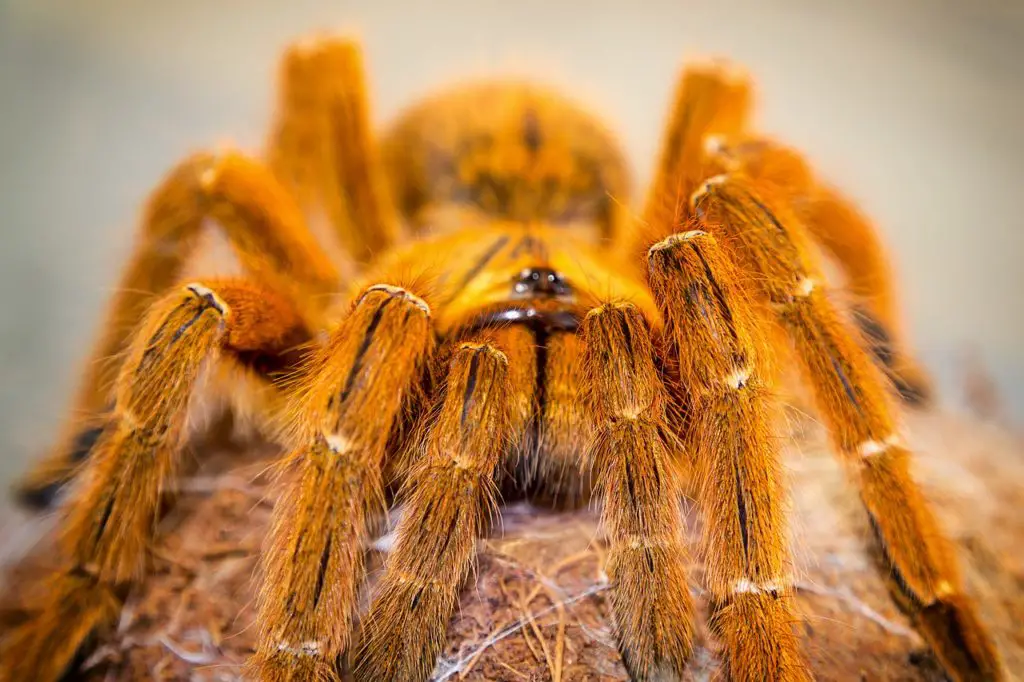
| Native location | Africa |
| Type | Terrestrial |
| Leg span | 6 inches |
| Growth speed | Fast |
| Lifespan | Females: 14 years / Males: 4 years |
| Experience level | Advanced |
The Pterinochilus Murinus, called the Orange Baboon in the hobby, is an absolutely gorgeous tarantula that sports a striking orange color. They’re a terrestrial species, but they’re known to exhibit arboreal tendencies when the opportunity presents itself as well.
This tarantula is not all that large, but it is not easy to handle. They’re fast, defensive, and quick to show a threat posture. They have potent venom and if they see no other option they do not hesitate to use it to defend themselves.
For experts, this beautiful spider is a great addition to the collection but beginners should look elsewhere.
1. Pelinobius Muticus
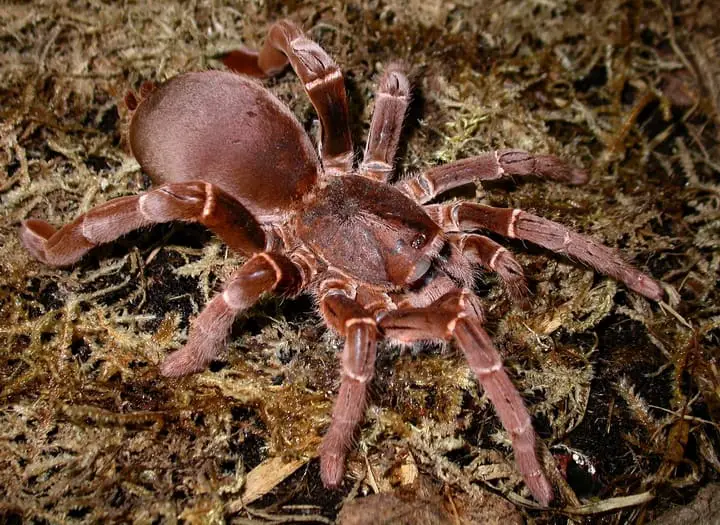
| Native location | Kenya & Tanzania |
| Type | Terrestrial |
| Leg span | 8 inches |
| Growth speed | Slow |
| Lifespan | Female: 20 to 25 years / Male: 10 to 15 years |
| Experience level | Advanced |
Of course, the number one spot has to go to the Pelinobius Muticus, aptly named the King Baboon Tarantula by hobbyists. This species is not only very large at a leg span of 8 inches, but they’re also extremely defensive. They’re among the most defensive of all the tarantulas and will strike a threat posture with almost no provocation at all.
They have potent venom, and massive fangs, and are incredibly quick for their size, so you always have to be alert when interacting with this spider.
This species is a borrower and tends to spend quite a bit of time hidden away, which is a shame because they’re a striking brown/orange copperish color.
If you want the king of baboons, this is the spider to go for. Be warned though, they’re a challenge to care for!
They also have a remarkably long lifespan. Females can live for up to 25 years!
Final words
There you have it, the top 7 baboon tarantulas! Some of the species listed here are not technically part of the Harpactirinae subfamily, but hobbyists have given them the baboon name so I decided that they should be included in this list.
If you’re considering getting any one of these species I recommend that you get some experience with some more docile New World species first. That way, you can familiarize yourself with caring for these animals before attempting the challenge of caring for a baboon. They’re interesting spiders for sure, but their defensive nature and potent venom mean that they need an experienced hand!
- How Long Do American Eskimo Dogs Live? Important Factors and Care Tips - September 29, 2023
- Do American Bulldogs Need Grooming? Essential Tips and Care Guidelines - September 29, 2023
- Do Bengal Cats Enjoy Playing? Essential Tips for Keeping Them Active - September 29, 2023